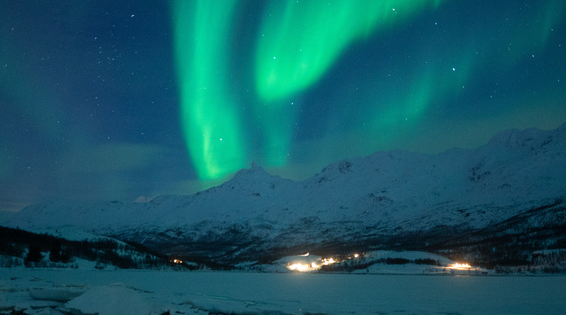
According to foreign media reports, recently, an international team of astronomers discovered a previously unknown mechanism behind the huge auroras at Saturn's poles.
The researchers found that unlike any other planet observed so far, Saturn produces auroras through cyclones within its own atmosphere, not just from the magnetosphere around Earth — as is the case on Earth.
This new discovery suggests that Saturn has a truly unique aurora, and that it is the only one that truly lives up to the name "Northern Lights." In addition, scientists say the discovery may spark some thinking about how local atmospheric weather effects on planets affect aurora production.
When NASA's Cassini probe first arrived at Saturn, it tracked radio emission "pulses" from the planet's atmosphere in an attempt to measure its mass rotation speed. Doing so allowed scientists to determine the length of the day for the ring-shaped planet.
But to the surprise of the NASA team, that rate appears to have changed since NASA's Voyager 2, a spacecraft that previously flew past Saturn, took a reading in 1981. That prevented the researchers from calculating the exact length of a day on the sixth planet, far from the sun.
Thankfully, scientists have indeed developed a new method that they were able to determine the length of a day on Saturn in 2019. Using gravity-induced disturbances in Saturn's ring system, they measured the time of day at 10 hours, 33 minutes, and 38 seconds.
Now, the new study shows why measuring Saturn's sun length is so difficult, which is closely related to the mechanism behind the unique type of aurora found on the planet.
Experts say it is now known that Aurora on Earth is driven by interactions with streams of charged particles from the sun. But in fact, the name Aurora Borealis comes from "the Dawn of the Northern Wind." These observations show that Saturn has a true Northern Lights — the first ever to be driven by wind in a planet's atmosphere.
In the new study, an international team of researchers mapped different flows of Saturn's ionosphere over a month in 2017. When comparing the data with known pulses of Saturn's radio auroras, the team found that the planet's auroras were generated by swirling weather patterns in its atmosphere. They also observed that these were the reasons for observing differences in Saturn's variable rotation rate.
A related research paper titled Saturn's Weather-Driven Aurorae Modulate Oscillations in the Magnetic Field and Radio Emissions was published in geophysical Research Letters.
Forward-looking Economist APP Information Group
Original text of the paper:
https://agupubs.onlinelibrary.wiley.com/doi/10.1029/2021GL096492